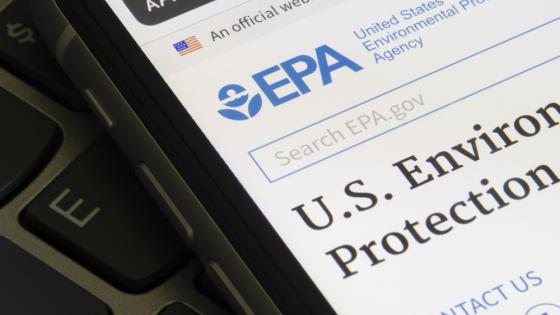Responsible investing – the practice of incorporating environmental, social, and governance (ESG) factors into investment decisions – is becoming increasingly mainstream. In 2006, the United Nations established the Principles for Responsible Investment (UN PRI), a commitment to invest responsibly, which was signed by 63 investors managing a total of $6.5 trillion. By the end of 2021, this had grown to 4,375 investors, representing $121 trillion.
Blanket exclusion of ‘brown’ industries – such as tobacco, gambling, and fossil fuels – is often seen as the purest and most effective form of responsible investing. Divesting starves these industries of capital, the argument goes, preventing them from creating further harm. Accordingly, practitioners and the public can hold investors accountable for their holdings of brown firms. In 2020, Extinction Rebellion protesters dug up a lawn outside Trinity College, Cambridge to protest its investment in fossil fuel companies, and many asset owners evaluate asset managers according to whether they manage a ‘net zero’ portfolio. Beyond climate, Morningstar’s ‘globe’ ratings of funds are based on the Sustainalytics ESG ratings of the stocks they hold and are thus boosted by divesting from brown stocks. Hartzmark and Sussman (2019) find that fund flows are significantly influenced by these ratings. Academic studies of greenwashing by asset managers similarly analyse their portfolio holdings (e.g. Gibson et al. 2022, Kim and Yoon 2021, Liang et al. 2022).
But divestment does not actually deprive a company of capital. An investor can only sell if someone else buys. Divestment is often compared to customer boycotts, but this is a false analogy: boycotts do deprive a company of revenue if no-one else steps in.
A more nuanced argument is that divestment does not defund a company immediately, but lowers the share price and makes it harder to sell shares in the future. However, it is unclear how strong this force is. Brown companies are not raising much capital to begin with, as they are in yesterday’s industries with few growth opportunities. Moreover, Gilchrist and Zakrajsek (2007) in the US and Melolinna et al. (2018) in the UK find that the effect of the cost of capital on investment is very small. There is so much uncertainty about the cash flows from investment that cash-flow forecasts dominate the cost of capital.
Arguably the strongest argument for divestment is that the share price matters for reasons other than the cost of capital. Even if a company is not raising capital, a low stock price worsens the CEO’s reputation (Narayanan 1985, Scharfstein and Stein 1990), increases the risk of takeover (Stein 1988) or termination (Edmans 2011), lowers the value of the CEO’s equity (Stein 1989), and demotivates employees.
However, our new paper (Edmans et al. 2022) shows that the best strategy may be ‘tilting’ (leaning away from a brown sector but being willing to hold an industry leader) rather than exclusion (shunning the industry outright). Central to our research is the observation that brown companies can take corrective actions that minimise the harm they create – for example, fossil fuel firms can develop renewable energy. The problem with blanket exclusion is that it provides no incentives for a brown company to take the corrective action: even if it invests in renewables, a fossil fuel company will still be classed as a fossil fuel company and be divested. In contrast, since a tilting strategy is willing to buy a brown firm if it is best-in-class, this motivates it to ensure that it is indeed best-in-class. This echoes the ‘governance through exit’ models of Admati and Pfleiderer (2009), Edmans (2009), and Edmans and Manso (2011), in which investor trading causes a manager’s actions to be reflected in the stock price.
There is a close analogy with executive pay. Many investors support linking pay to ESG performance so as to provide CEOs with incentives to improve sustainability. However, blanket exclusion means that their capital flows are independent of ESG performance, and provide no incentives to bolster it.
We build a model in which responsible investment affects social welfare through both of the above channels. There is a single brown firm that emits negative externalities. The manager can take a corrective action that reduces both externalities and firm value. The firm also raises capital that it uses to fund an expansion, increasing both firm value and externalities. We show that divestment is most effective at starving a company of capital and hindering expansion, but tilting is more powerful at inducing the corrective action. The optimal strategy is a trade-off between these two forces, and involves tilting if the corrective action is particularly effective at reducing the externality, because this consideration dominates the trade-off. This result suggests that exclusion may be optimal for industries such as controversial weapons, where it is relatively difficult to reduce the harm produced. In contrast, tilting may be preferred for fossil fuels, where managers can take corrective actions.
In the core model, the corrective action is publicly observable, so the investor can commit to a tilting strategy that rewards a brown company from being best-in-class. We extend the model to the case in which the corrective action is unobservable; instead, only an imperfect signal such as an ESG rating is observed, so the investor can only base her trades on the rating. Even if the manager takes the corrective action, it may not be reflected in the rating, so he is not rewarded for the action. Thus, to provide sufficient incentives to reform, the investor must promise greater purchases upon a positive ESG rating to compensate for the fact that corrective actions will not always be reflected in higher ratings. These purchases allow the brown firm to expand and create more harm, so tilting may no longer be optimal.
Many responsible investors claim to go beyond ESG ratings and conduct their own analysis. By doing their own research, they can find out whether the company has taken the corrective action, and buy shares if it has. However, doing so may lead to the investor being accused of greenwashing – buying a brown company even though it has not reformed in the eyes of the market, which only observes ratings. If the responsible investor suffers a sufficiently large reputational cost from buying such a company, she will not do so. This reduces her incentives to do her own research, and indeed to implement the tilting strategy in the first place.
A common criticism of divestment is that hedge funds can buy brown stocks at depressed prices, reversing the impact of divestment (Berk and van Binsbergen 2022). In another extension, we add a hedge fund to the model whose sole objective is to maximise trading profits. We show that the hedge fund chooses to buy half the shares that are not purchased by the responsible investor. If she buys more than half, she pushes prices up too much and reduces her profits. On the one hand, this makes tilting less effective – since the hedge fund partially offsets the responsible investor’s trades, he needs to promise an even larger purchase to induce the corrective action, making tilting more costly to implement. On the other hand, the hedge fund also makes exclusion less effective, since she buys up under-priced stock and reduces the impact of exclusion on the cost of capital. Since the hedge fund buys half of the free float, his impact is greater on exclusion (where the responsible investor owns zero and the free float is the total shares outstanding) than on tilting (where the investor owns a positive number of shares). Thus, the presence of hedge funds makes tilting even more effective relative to exclusion.
Our model has important implications for how asset managers should practice responsible investing, and for how their clients and the public should evaluate them. It is common to assess the responsibility of an asset manager by their holdings of green stocks, and accuse those with brown firms of greenwashing. Such simplistic evaluations are harmful. They discourage responsible investors from tilting strategies, which may change behaviour more effectively than exclusion. Such evaluations also discourage investors from gathering private information on whether companies have taken corrective actions – if they have, but their actions are not yet publicly observable, the investor can’t buy shares as she may be accused of greenwashing. She will follow ESG ratings rather than doing her own research.
Our concerns about the effectiveness of divestment are quite different from the common counterargument that ‘divestment is bad because you can’t engage’. While true, some investors rarely engage to begin with – their expertise may be stock selection rather than engagement, or they lack the substantial financial resources needed. For example, Engine No. 1 spent $30 million electing three climate-friendly directors onto Exxon’s board. Even for investors who rarely engage, our research shows that exclusion may not be the most effective divestment strategy.
References
Admati, A R and P Pfleiderer (2009), "The ‘Wall Street Walk’ and Shareholder Activism: Exit as a Form of Voice", Review of Financial Studies 22: 2645–2685.
Edmans, A (2009), "Blockholder Trading, Market Efficiency, and Managerial Myopia", Journal of Finance 64: 2481–2513.
Edmans, A (2011), "Short-Term Termination Without Deterring Long-Term Investment: A Theory of Debt and Buyouts", Journal of Financial Economics 102: 81–101.
Edmans, A and G Manso (2011), "Governance Through Trading and Intervention: A Theory of Multiple Blockholders", Review of Financial Studies 24: 2395–2428.
Edmans, A, D Levit and J Schneemeier (2022), “Socially Responsible Divestment”, CEPR Discussion Paper 17262.
Gibson, R, S Glossner, P Krueger, P Matos and T Steffen (2022), “Do responsible investors invest responsibly?”, SSRN Working Paper.
Gilchrist, S and E Zakrajsek (2007), “Investment and the Cost of Capital: New evidence from the corporate bond market”, NBER Working Paper.
Kim, S and A S Yoon (2021), “Analyzing Active Managers’ Commitment to ESG: Evidence from United Nations Principles for Responsible Investment”, SSRN Working Paper.
Liang, H, L Sun and M Teo (2022), “Responsible Hedge Funds”, Review of Finance, forthcoming.
Melolinna, M, H Miller and S Tatomir (2018), “Business investment, cost of capital and uncertainty in the United Kingdom — evidence from firm-level analysis”, Bank of England Working Paper.
Narayanan, M P (1985), "Managerial Incentives for Short-term Results", Journal of Finance 40: 1469–1484.
Scharfstein, D and J C Stein (1990), "Herd Behavior and Investment", American Economic Review 80: 465–479.
Stein, J C (1988), "Takeover Threats and Managerial Myopia", Journal of Political Economy 46: 61–80.
Stein, J C (1989), "Efficient Capital Markets, Inefficient Firms: A Model of Myopic Corporate Behavior", Quarterly Journal of Economics 104: 655–669.






